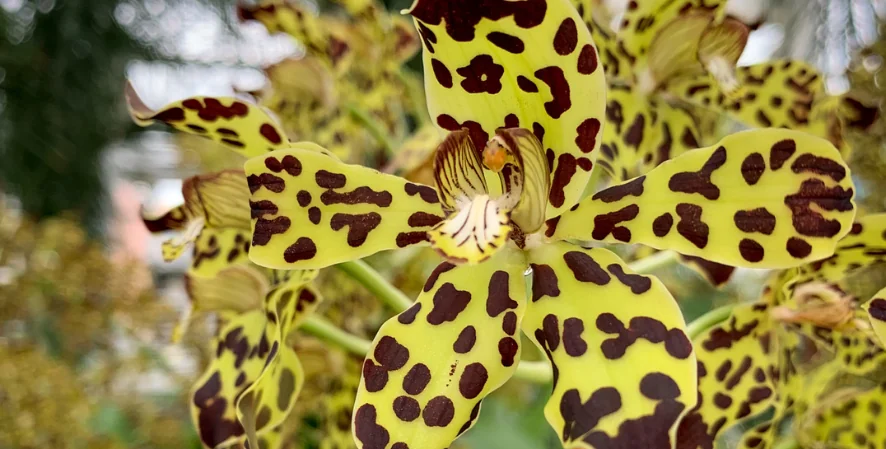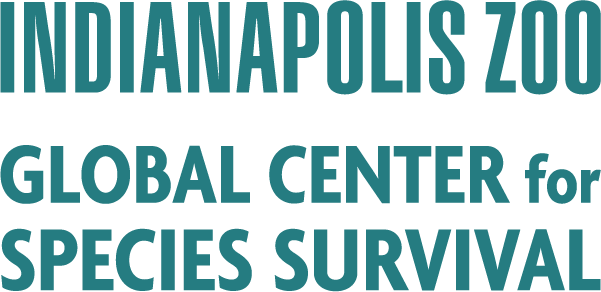
Biodiveristy in Bloom
Travel with us to the tropics. Some spectacular orchids are currently blooming inside the Hilbert Conservatory. The building may be under construction, but our horticulture team is still hard at work caring for this stunning botanical gardens collection.
Orchids are the second most diverse family of flowering plants, with c. 28,000 described species, just after the daisy family. You can find most of them in Colombia, the most diverse country in the world for orchids with over 4,000 species, mainly due to its different types of environments found in montane areas. In the USA there are around 200 species of orchids, from which 20% are found in Indiana, including some impressive slipper 0rchids (Cypripedium), such as the pink lady slipper (C. acaule).
Orchids can be terrestrial, like slipper orchids (Cypripedioideae), epiphytic living on trees and shrubs, like tiger orchids (Grammatophylum), and lianas like Vanilla. Their flowers range from just a couple of millimeters (Platystele) to large flowers such as the popular Vanda. They have complex biology with a high specialization in habitat, pollinators, and fungi. The complexity of their flowers is a consequence of their evolution to attract pollinators like bees, flies, butterflies and moths. A great example is Darwin’s orchid (Angraecum sesquipedale), pollinated by Wallace’s sphinx moth (Xanthopan morganii), which evolved to develop a long spur of up to 43 cm.
Orchid seeds are extremely small and they lack the nutrients needed to germinate and grow, so they are dependent on fungi species. They form symbiotic relationships with fungi very early on, which they keep during their lives to supplement nutrients during stressful times. Without those associations, orchid populations cannot survive.
As with most species on earth, this group of plants faces several different threats, mainly habitat loss, climate change, unsustainable and often illegal harvesting for horticulture, food or medicine. However, despite its diversity and number of threats, less than 1% of orchids have their extinction risk assessed in the IUCN Red List of Threatened Species. From these, five species are listed as extinct and 47% as threatened. This scenario is particularly alarming when we look at groups popular in the horticulture trade that have been completely assessed, such as the slipper orchids with c. 90% of species threatened with extinction.
We can all protect these species by ensuring we are only buying orchids that have not been collected from the wild, or that have certification of sustainable harvesting. Also, when you are enjoying nature, never collect wild plants. You can always record them as a photographic memory and share them on citizen science platforms such as iNaturalist.
The Global Center for Species Survival at the Indianapolis Zoo supports the IUCN Species Survival Commission’s Orchid Specialist Group, which focuses on orchid conservation worldwide. Follow them on social media (Facebook and Twitter) and check their website to learn more about the amazing work they do. We also have a varied collection of orchids in our botanical collection at Zoo, including the Grammatophyllum ‘Broga Tiger’ which is currently in full bloom. Don’t forget to visit our gardens when they reopen next spring to see these spectacular species in person!
This blog post was written by Cátia Canteiro, the Plants & Fungi Conservation Coordinator for the Global Center for Species Survival. She consulted with Indianapolis Zoo and White River Gardens horticulture curators Dan Baker and Mike Stockman.
Published April 16, 2022

